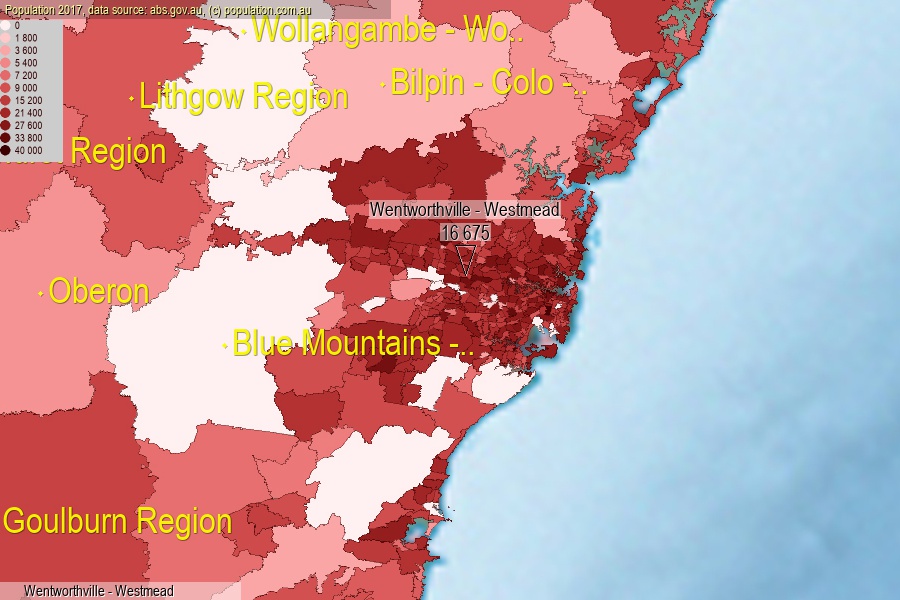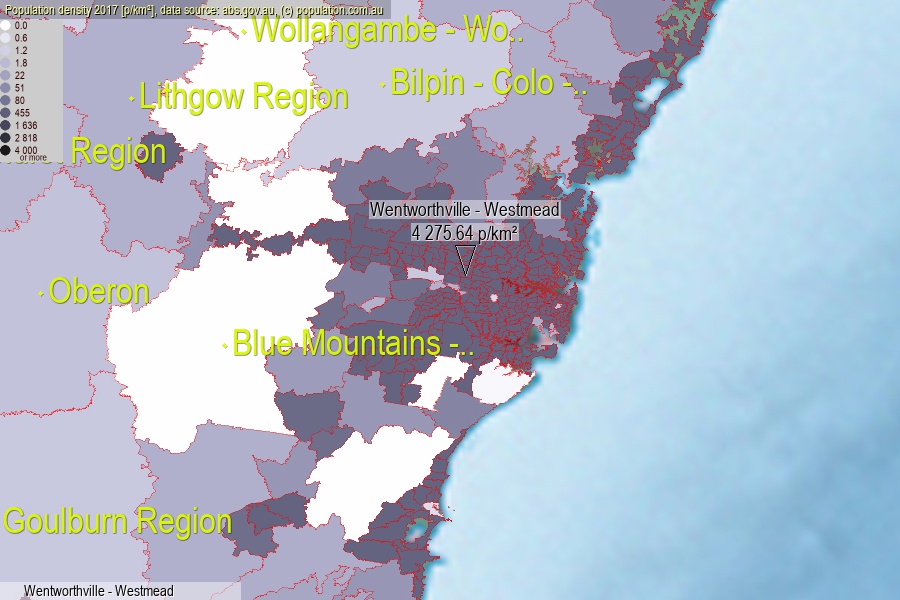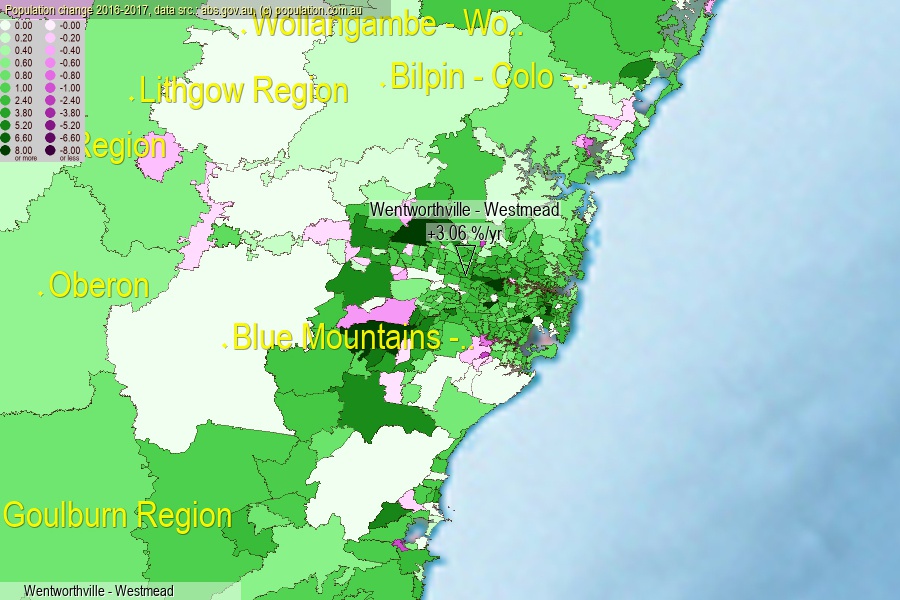 population.com.au
population.com.auLast official estimated population of Wentworthville - Westmead (as Statistical Area Level 2) was 16 675 people (on 2017-06-30)[2]. This was 0.07% of total Australian population and 0.21% of NSW population. Area of Wentworthville - Westmead is 3.90 km², in this year population density was 4 275.64 p/km² . If population growth rate would be same as in period 2016-2017 (+3.06%/yr), Wentworthville - Westmead population in 2025 would be 21 221. [0]



Click to enlarge. Wentworthville - Westmead is located in the center of the images.
Population [people], population density [p./km²] and population change [%/year] [2]
View borders » (new window) [4]
[2001-2002] +1.57 %/Yr.
[2002-2003] +1.16 %/Yr.
[2003-2004] +0.26 %/Yr.
[2004-2005] +1.60 %/Yr.
[2005-2006] +1.82 %/Yr.
[2006-2007] +2.48 %/Yr.
[2007-2008] +3.57 %/Yr.
[2008-2009] +2.39 %/Yr.
[2009-2010] +1.44 %/Yr.
[2010-2011] +1.59 %/Yr.
[2011-2012] +1.35 %/Yr.
[2012-2013] +1.51 %/Yr.
[2013-2014] +1.19 %/Yr.
[2014-2015] +1.29 %/Yr.
[2015-2016] +1.33 %/Yr.
[2016-2017] +3.06 %/Yr.
[0] Calculated with linear interpolation from officially estimated population
[1] Read more about SA2 and Australian Statistical Geography Standard (ASGS) on abs.gov.au
[2] Population data from Australian Bureau of Statistics (Population and density: 2017; change: 2016-2017)
[3] Digital Boundaries: Australian Statistical Geography Standard (ASGS) 2016.
[4] Border coordinates are simplifyed using Ramer-Douglas-Peucker algorithm.